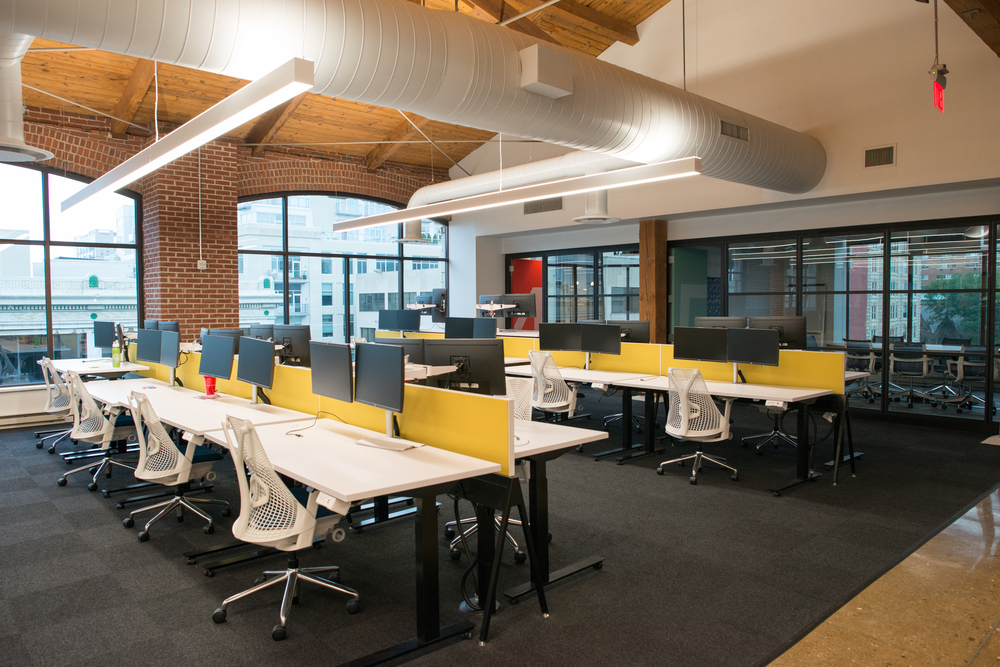Top 5 Facility Management Trends in 2022

Facilities management is a rapidly growing and evolving industry. With many structural changes on the horizon, this field can expect to see major challenges, AI-driven disruptions, and improvements in the coming year.
Table of Contents:
Major Changes in the Facility Management Industry
The goal of every FM company is to help businesses with cost savings, internal operations management, compliance, and risk management. Despite FM services being a great investment, there are numerous changes affecting the industry.
According to Mckinsey & Company, a leading organizational consulting firm, there are several factors contributing to the evolution of facility management service companies over time, especially most recently.
Challenging economic conditions, fears of recession, and tighter budgets due to slowed economic growth can mean investing less in facility management services.
Deciding to postpone FM isn’t without long-term costs. Deteriorating buildings, poor-functioning internal operations, and inefficient energy usage all lead to potentially larger costs down the line.
Conditions like these provide the groundwork for emerging trends of 2022. Here are the top 5 trends for FM companies in 2022.
1. Leveraging Digital Technologies

AI is entering the mix — among several other emergent technologies, including the blockchain and various cloud-based resources for digital file-sharing between FM companies and their constituents.
Comprehensive FM companies must be up to date with emerging technologies, embracing them and integrating them into their functional workflow. This is exactly what our staff at Omnia360 strives to do.
The days of using T-Card systems and spreadsheets to manage operations are gone — long gone.
Using a robust CAFM system streamlines and organizes tasks, leading to benefits like:
- More efficient space utilization
- Cost savings
- Reduction in asset inventories and greater organization
- Fast and accurate reporting methods that can be shared with stakeholders
Related Post: Top 5 Facility Management Software for 2022
Utilizing AI-based facilities management systems can streamline internal processes like never before: automatically generating reports, maintenance schedules, replacement requests, and more without human involvement. More and more softwares offer secure third-party integrations add a new functionality without compromising the integrity of current data systems.
With AI technologies, it’s set it and forget it. Countless micro-organizational tasks are performed outside of working hours, giving added flexibility and free time to dedicate towards other, high-priority tasks. AI integrations are also benefiting FM companies by allowing them to make accurate predictions and plan ahead, replacing dysfunctional equipment and eliminating human error from the decision-making processes.
AI integrations aren’t just for administrative or organizational task processes. Cobotics are becoming a well-used technology that’s getting integrated into Soft FM services, dedicated to small, repetitive tasks like lawn mowing, vacuuming and floor scrubbing. This allows the staff to focus on more detailed, complex cleaning services on buildings.
2. Outsourcing Facilities Management Services

The scale and scope of facilities management services can be quite broad. Shaving off extra costs and time investment by outsourcing some of these services to third-party contractors is an excellent way to adapt.
Naturally, this trend depends on the industry vertical. For manufacturing companies, landscaping and janitorial services are outsourced more often than equipment maintenance. Whereas, facilities in the retail or service sector balance insourcing and outsourcing of various tasks.
Outsourcing contract work, be it landscaping, janitorial, or equipment maintenance, to integrated facility management (IFM) services is increasingly showing itself to be a cost-effective choice that leads to a competitive advantage in the market.
3. Using the (IoT) Internet of Things & Big Data

Integrate the IoT.
Integrating the Internet of things includes using devices and equipment, like motion sensor lighting and automated thermostat controls, that enable FM managers and building owners to gain more transparency into their building’s energy usage.
There are drawbacks. For companies to take advantage of IoT’s benefits, it involves a costly upgrade from legacy systems. There is also the issue of building management system (BMS) compatibility, as well as device compatibility with IoT.
Big data gives big results.
It’s what has and continues to drive informative decisions by FM companies.
Collecting, analyzing, and visualizing data can be used to inform dynamic, meaningful business decisions for more efficient use of energy, maintenance costs, and operational resources.
To engage in data-backed decision-making for your building, investing in a smart building is necessary. This can include advanced thermostats, mechanical equipment, and air quality and occupancy sensors.
Each property is unique and has its own set of infrastructural challenges. Modern technologies give you data to identify and address them. Doing so leads to healthier and more energy-efficient internal environments at a facility.
Data-driven decisions lead to better results for employees, residents, customers, and the business’s bottom line.
4. Workplace Strategy

The Great Resignation is a sign that people are beginning to prioritize their physical and mental well-being when considering employment opportunities. The future of work is hybrid, flex-work, being partly at home and partly in the office.
So when employees do come in, their office time is highly intentional and purposeful. Your workplace layout must mirror this intentionality, not only through a healthy, energy-efficient building with clean air but well-placed interior layouts.
Retrofitting and updating modern offices.
To meet this trend head-on, FM companies can help firms create workspace layouts with appealing, comforting natural lighting, comfortable furniture, and lifestyle amenities (shown to enhance employee experience).
Research shows the importance of effective space management, as real estate is the second-highest expense for organizations.
Purposeful office spaces.
Another great option is creating sectioned-off spaces in your building that you can then repurpose to be more task-specific or interaction specific: a room for client meetings, team collaborations, or personal quiet work time.
The goal of FM-guided office planning is to improve employee satisfaction and, ultimately, productivity.
5. Integrating Related Services and Adding Value

The scope of services offered by facilities management companies isn’t limited to regular maintenance on buildings, fixing light bulbs, or multi-split furnaces. It extends well past that.
Providing great value through additional related services is a major trend that FM companies are jumping on — services like project management, organizational consulting, and transaction management.
There are numerous functions associated with providing high-value, related services.
Energy management. In this case, there is an active focus put on how to best conserve energy usage in a building. It can take the form of implementing retrofits and procedural changes.
Production maintenance is another common service; it can include things like cleaning and repairing assembly stations, equipment, and testing stations.
The benefits of this trend are that fewer people are involved, which makes for lightning-fast decisions. It’s far easier to manage all of the work categories involved too.
Actions Your Business Can Take Today

FM companies can assess their organizational maturity and ability to manage vendor relationships.
This can be done directly and indirectly.
- Invest in external expert training to better learn digital technologies
- Organize joint meetings with suppliers and act on stakeholder satisfaction surveys
Leverage facilities management resources as a priority.
Tapping into an FM company’s resources can lead to a wealth of savings. A business’s chief product officer or chief operations officer can work with a facility management team to transform its pipeline for savings.
Ensure you have a cross-functional team.
Facility management companies have to have a well-integrated organizational structure, composed of cross-functional team members. At Omnia360, we have just that. The focus is on easy collaboration and agile work order implementation.
Build a case for investing in proposed trends.
To implement these trends, you’ll need to get your stakeholders on board. Create a business case with a successful, controlled pilot project. You can use the results to showcase proof of why your organization should invest in these strategies.
Design an integrated implementation road map.
Develop a comprehensive and long-term strategy to incorporate the latest facility management trends. Gradually implementing these new strategies and keeping track of the resulting changes is the best method.
Review, audit and refine your strategies.
Leaders in your organization should establish a regular quarterly review of your FM strategy processes in order to better refine and hone your overarching vision.
Schedule Integrated Facility Management Solutions with Omnia360
Our company keeps up with the latest trends, technologies, and advances in our industry. We help manage your building’s needs at any time (on-call mobile mechanics are available 24/7) with the help of our cross-trained tradesmen and specialists. Contact us today for a free quote.